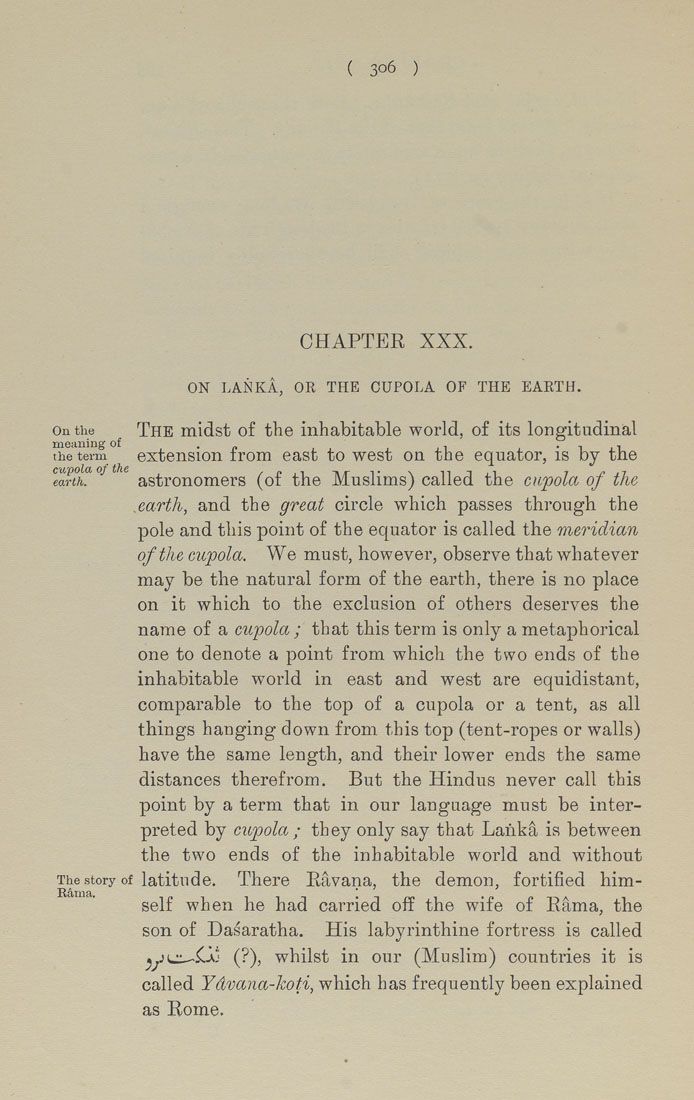Bīrūnī, Muḥammad ibn Aḥmad, Alberuni's India (v. 1)
(London : Kegan Paul, Trench, Trübner & Co., 1910.)
|
||
|
|
|
|
| Page 306 |

( 3o6 CHAPTER XXX. ON LANKA, OR THE CUPOLA OF THE EAETH, On the The midst of the inhabitable world, of its longitudinal the term extcusion from east to west on the equator, is by the earth. astronomcrs (of the Muslims) called the cupola of the earth, and the great circle which passes through the pole and this point of the equator is called the meridian of the cupola. We must, however, observe that whatever may be the natural form of the earth, there is no place on it which to the exclusion of others deserves the name of a cupola ; that this term is only a metaphorical one to denote a point from which the two ends of the inhabitable world in east and west are equidistant, comparable to the top of a cupola or a tent, as all things hanging down from this top (tent-ropes or walls) have the same length, and their lower ends the same distances therefrom. But the Hindus never call this point by a term that in our language must be inter¬ preted by cupola ; they only say that Lanka is between the two ends of the inhabitable world and without The story of latitude. There Ravana, the demon, fortified him¬ self when he had carried off the wife of Rama, the son of Dasaratha. His labyrinthine fortress is called . jl::,-.^-*.; (?), whilst in our (Muslim) countries it is called Ydvana-koti, which has frequently been explained as Rome. |
| Page 306 |







